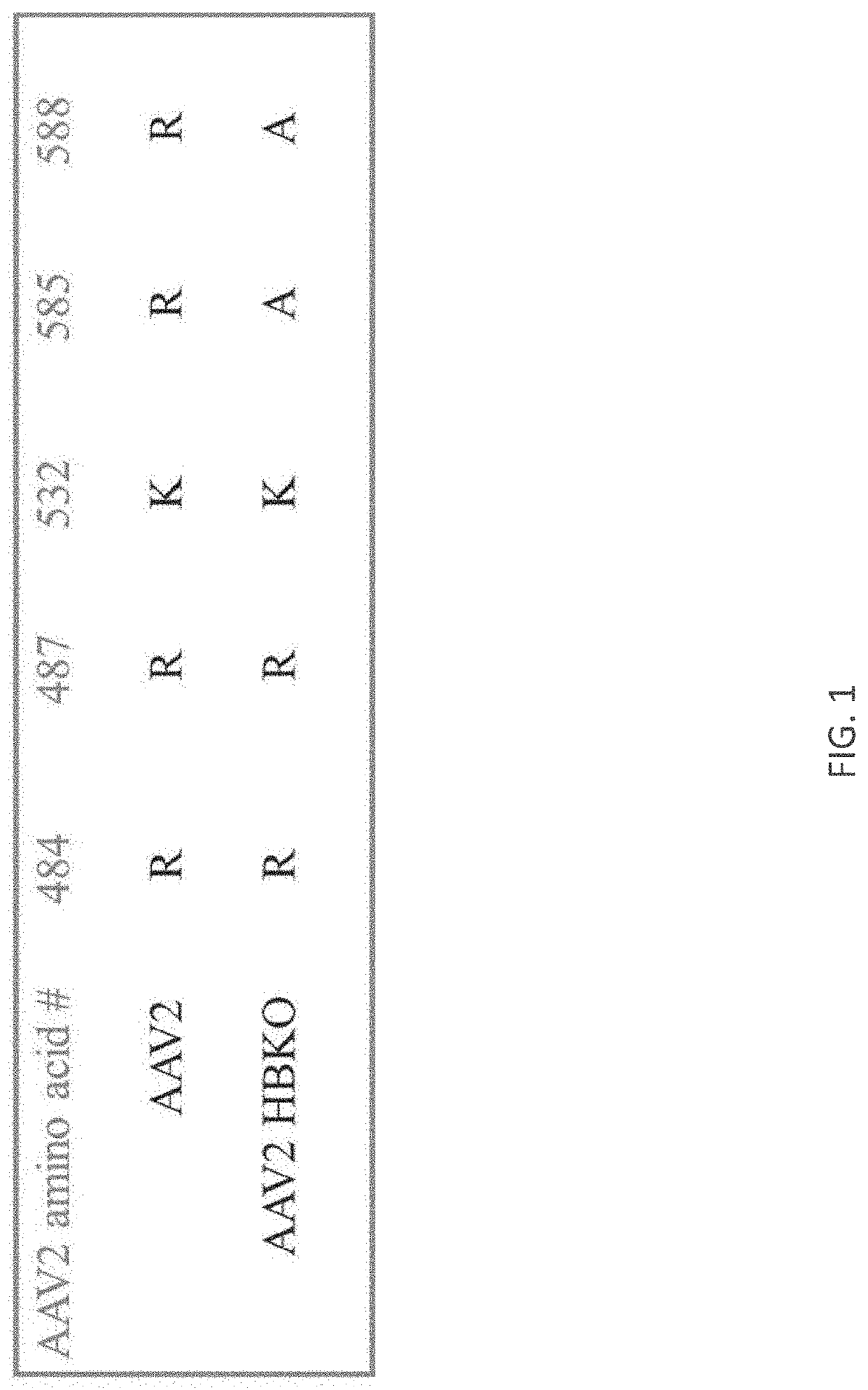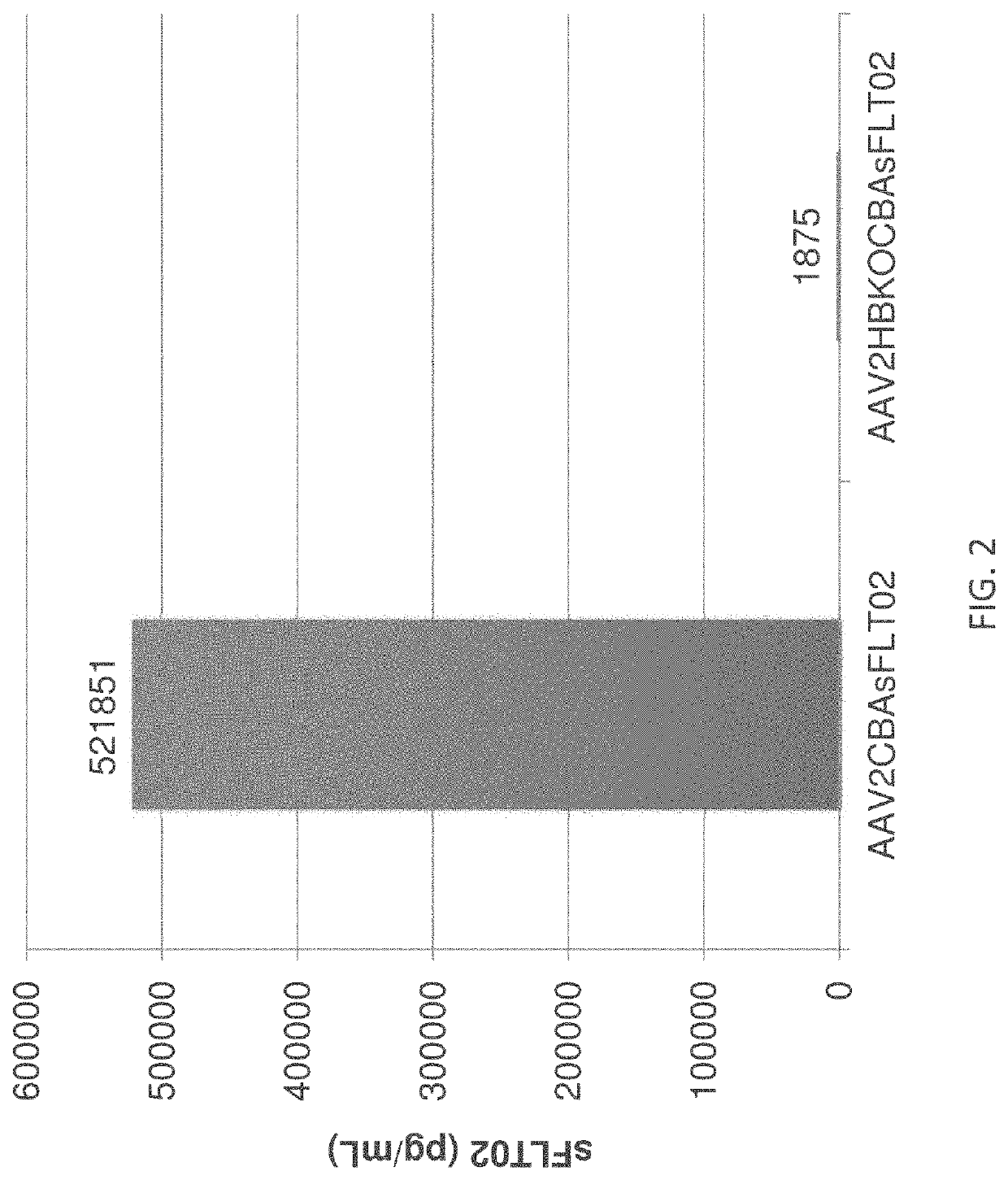Aav vectors for retinal and CNS gene therapy
a technology of aav and gene therapy, applied in the field of raav vectors, can solve the problems of affecting the treatment effect of neurologic disorders, especially delivery issues, etc., and achieve the effects of reducing neuroinflammation, reducing neuroinflammation, and increasing expression
- Summary
- Abstract
- Description
- Claims
- Application Information
AI Technical Summary
Benefits of technology
Problems solved by technology
Method used
Image
Examples
example 1
in Arginine Residues Required for HSPG Binding Decrease AAV2-Mediated Transduction in Cultured Cell Lines
[0295]AAV2 gene therapy vectors are currently being used in clinical trials for ocular indications. These vectors can be delivered via an intravitreal route of administration, which in mice and non-human primates results in transduction of retinal ganglion cells and Muller cells, or by a subretinal route of administration, which targets the retinal pigmented epithelial cells and photoreceptor cells. Different serotypes of AAV use different cell surface receptors and co-receptors for infection. It is known that the primary cell surface receptor for AAV2 is heparan sulfate proteoglycan (HSPG) (Summerford, C. and Samulski, R. J. (1998) J. Virol. 72(2):1438-45). Understanding the mechanism whereby AAV2 transduces the retina is important for further development of AAV gene therapy vectors.
[0296]To investigate the role of HSPG binding in AAV2 transduction of the retina, AAV2 vectors we...
example 2
in Arginine Residues Required for HSPG Binding have Opposite Effects on AAV2-Mediated Transduction Following Intravitreal Versus Subretinal Injection
[0308]The ability of HBKO mutant AAV2 particles to transduce ocular cells upon intravitreal and subretinal injection was tested in the mouse. FIGS. 4A & 4B compare the transduction efficiency of wild-type and HBKO AAV2 particles upon intravitreal or subretinal injection. For these experiments, transduction efficiency was assayed by measuring soluble Flt (sFLT) expression upon transduction with AAV2 particles bearing a transgene that uses the ubiquitous CBA promoter to drive expression of Flt. Using intravitreal injection, the HBKO mutant showed a greatly reduced ability to transduce cells (FIG. 4A).
[0309]Surprisingly, the HBKO mutant showed enhanced transduction after subretinal injection (FIG. 4B). This increase was consistently observed when the amount of AAV2 vector genomes injected was varied 10-fold (108 and 109 vg, as labeled). Th...
example 3
d GFP Expression after Intrastriatal AAV2HBKO Vector Delivery
[0316]Through site-directed mutations introduced to the AAV2 capsid, an AAV2 HBKO mutant vector was generated that is unable to bind heparin. The transduction profile of this HBKO vector was evaluated in both wild-type mice and a HD mouse model (YAC128) using single intrastriatal injections.
[0317]Methods
Construction of AAV2 Arginine Mutant Plasmid
[0318]The AAV2 rep / cap plasmid, pIM45BD, was mutated using the Quikchange Lightning Multi Site Directed Mutagenesis Kit (Agilent Technologies). A PCR mutagenesis primer was designed to introduce changes of arginine to alanine at residues 585 and 588. Positive mutants were confirmed by sequencing.
Production of AAV Vectors
[0319]Recombinant AAV vectors were produced by triple transfection (using calcium phosphate) of human embryonic kidney carcinoma 293 cells (HEK-293) as previously described (Xiao et al. (1998) J. Virol. 72:2224-2232). Briefly, a plasmid containing the rep gene from...
PUM
 Login to View More
Login to View More Abstract
Description
Claims
Application Information
 Login to View More
Login to View More - R&D
- Intellectual Property
- Life Sciences
- Materials
- Tech Scout
- Unparalleled Data Quality
- Higher Quality Content
- 60% Fewer Hallucinations
Browse by: Latest US Patents, China's latest patents, Technical Efficacy Thesaurus, Application Domain, Technology Topic, Popular Technical Reports.
© 2025 PatSnap. All rights reserved.Legal|Privacy policy|Modern Slavery Act Transparency Statement|Sitemap|About US| Contact US: help@patsnap.com



